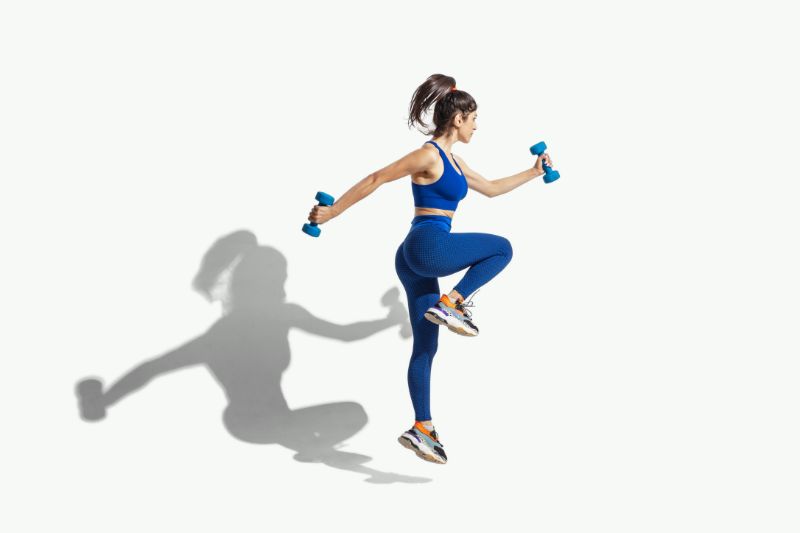When planning your workout routine, it’s crucial to consider the optimal number of exercises to include. Have you ever wondered if doing too many exercises in a single session could be counterproductive?
By understanding the science behind exercise selection and the impact on your body, you can make informed decisions to maximize your fitness results. So, how many exercises should you aim for to strike the right balance between progress and efficiency?
Let’s explore the factors that come into play when determining the ideal quantity for your workouts.
Factors Affecting Exercise Selection
When considering the factors affecting exercise selection, it’s crucial to prioritize movements that align with your fitness goals and abilities. Exercise intensity and volume play a significant role in determining the effectiveness of your workout. Ensure that the exercises you choose match the level of intensity required to challenge your muscles and stimulate growth.
Additionally, consider the time constraints you may have and select exercises that allow you to make the most out of your workout sessions. Aligning your exercises with your goals is essential for progress. Whether your aim is to build strength, improve endurance, or enhance flexibility, tailor your workout to meet these specific objectives.
Stay focused, stay committed, and watch your fitness journey flourish.
Ideal Number for Strength Training
To optimize your strength training routine, focus on the ideal number of exercises per workout that will challenge and stimulate your muscles effectively. When it comes to strength training, quality often trumps quantity.
Incorporating compound movements like squats, deadlifts, and bench presses can provide a comprehensive workout targeting multiple muscle groups. Aim for around 4-6 exercises per session to ensure you cover different areas of the body adequately.
Utilize set rep schemes such as 3-4 sets of 8-12 reps per exercise to promote muscle growth and strength development. Remember to include rest intervals between sets to allow for muscle recovery and optimal performance.
Optimal Quantity for Cardio Workouts
For effective cardio workouts, consider the optimal quantity of exercises that will elevate your heart rate and enhance your overall cardiovascular endurance. When deciding between HIIT and steady state cardio, remember that HIIT, with its intense bursts of activity, can be more time-efficient and effective at burning calories. On the other hand, steady state cardio, like a long run or bike ride, can also boost endurance when done consistently.
It’s essential to find the right balance between frequency (how often you do cardio) and duration (how long each session lasts). Whether you prefer short, intense HIIT sessions or longer steady state workouts, what matters most is staying committed and pushing yourself to improve your cardiovascular health.
Balancing Compound and Isolation Movements
Finding the right balance between compound and isolation movements is crucial for achieving a well-rounded and effective workout routine. Compound exercises, like squats and deadlifts, target multiple muscle groups simultaneously, enhancing muscle growth and overall strength.
On the other hand, isolation movements, such as bicep curls and leg extensions, focus on specific muscles, aiding in muscle targeting and definition. Incorporating a mix of both compound and isolation exercises in your workout regimen can maximize effectiveness by targeting various muscle groups while also ensuring time efficiency.
Customizing Your Workout Plan
Achieving your fitness goals starts with tailoring a workout plan that fits your needs and preferences. To customize your workout plan effectively, consider factors like workout intensity and rest periods. Adjusting these can help you challenge yourself appropriately and prevent burnout.
Incorporating exercise variations and progression techniques is crucial for continuous improvement. Experiment with different exercises to target various muscle groups and keep your routine engaging. Gradually increase the difficulty or volume of your workouts to avoid plateaus and keep making progress.
Conclusion
So, remember to tailor your workout routine to fit your goals, preferences, and fitness level. By balancing strength training with cardio, incorporating both compound and isolation movements, and customizing your plan, you can maximize your results.
Stay focused, stay consistent, and don’t be afraid to push yourself. With the right approach, you can achieve your fitness goals and become the best version of yourself.
Keep pushing, keep striving, and keep moving forward towards a healthier, stronger you. You got this!
Check out other related articles:


